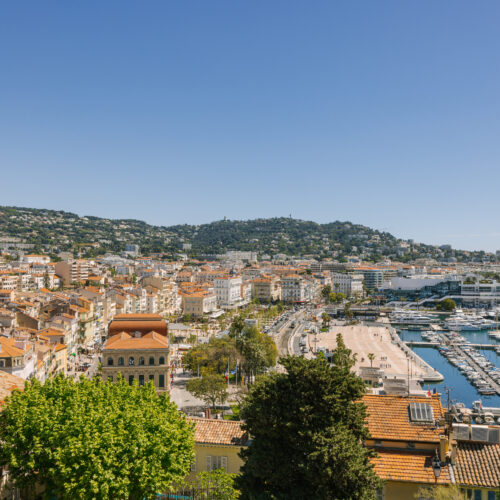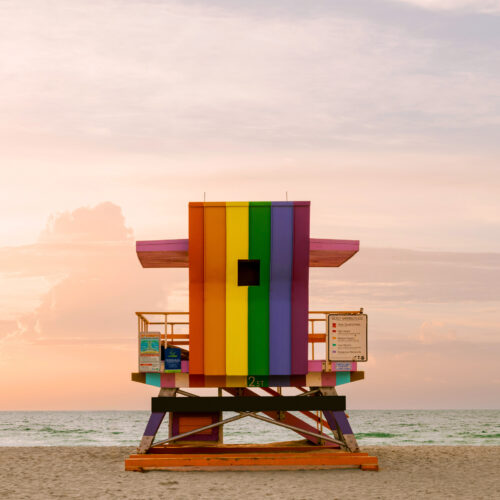Sonder is focused on enhancing the vibrancy and culture of every city we operate in. A key element of this is partnering with property owners to identify historic buildings that Sonder can help revitalize and open as a hospitality option for travelers. We deeply value the authenticity of these buildings, and understand that integrating the past with the present is essential to retaining the unique attributes of a city.
We’re honored to have recently been recognized for this work by Fast Company as an honoree in their annual Innovation by Design awards. Below are a few examples of Sonder’s historic travel options.

New Orleans
New Orleans is one of Sonder’s largest markets to-date, with hundreds of unique rooms that reflect the city’s vibrant history. It’s also home to Sonder’s largest live project, the 111-unit renovated historic Jung Hotel. First opening in 1907, The Jung was once known as the largest convention hotel in the South — hosting Carnival balls, high school proms, and a 1964 appearance by President Lyndon B. Johnson. At its largest, the hotel boasted 759 rooms. During Hurricane Katrina, the building was flooded after the levee failures – but the hotel was later renovated and listed as apartments. However, none were ever leased. Since Sonder entered the building, this portion of Canal Street has flourished with the addition of other retail and hospitality businesses.
Sonder also just recently opened its doors at The Hotel Maison de Ville, a beautiful historic property located in the heart of New Orleans’ French Quarter. The building was built by Jean-Baptiste Lilie Sarpy in 1800 after the disastrous Great New Orleans Fire of 1788, adjacent to cottages that are now believed to be the oldest buildings in New Orleans. With a private courtyard and balconies overlooking Toulouse Street, the hotel has hosted many famous guests since it started operating in the 1940s. The building is the birthplace of both the New Orleans signature Sazarac cocktail, and the writing of Tennessee Williams’ A Streetcar Named Desire — a frequent guest at the hotel.

Houston
Sonder’s Hogg Palace building, built in March of 1921, was formerly known as both the Armor Building and the Great Southern Building. The ground floor was initially used as a showroom for automobiles, and the rest were offices. William Clifford Hogg, the oldest son of former Texas Governor Jim Hogg, used the top floor to manage the Hogg Brothers Company and the family’s philanthropic projects until 1941. The roof offered a garden and elegantly furnished rooms, with artwork from Frederic Remington. In the early 90s, the space was converted into almost 80 Loft-style apartments – later to become Sonder spaces.

Detroit
Sonder offers 45 unique spaces at The Randolph Building, which has stayed close to its original designs (with the necessary renovations) since it was first built in 1922. Erected by John J. Barlum and his family in their rebuilding of the Cadillac Square area, the building originally catered to middle-class level tenants. Originally called The Lawyer’s Building, it was designed in the Chicago School architectural style, and is constructed of reinforced concrete and steel faced with terra cotta. It stands 10 stories tall and features regular bays with grouped wood casement windows with metal spandrel panels. It was one of the few office buildings of the time that strove for modernism over ornamentation. It is currently considered to be the finest nearly unaltered Chicago-style high rise in Detroit; the only change made to the building is the modern marble ground-level storefront.
Philadelphia
Philadelphia is a growing market for Sonder, with an abundance of historical buildings that are ripe for hospitality operators interested in preserving the old charm. Once a former hat factory, Sonder’s The Heid building in Philadelphia has been fully transformed into a stunning modern mixed-use development. With a preserved industrial style, the Sonder spaces feature original warehouse windows and high ceilings — and select rooms feature new wall murals painted by local artists.
In February 2019, Sonder started operating dozens of loft-style apartments in the Sixteen Hundred Lofts property. Built in 1908, the building was once a factory for the Pennsylvania Railroad and has since served a multitude of purposes including a race car shop, a yarn factory, a men’s suit manufacturer, and most recently as the U.S. immigration and customs office.

Chicago
While Sonder has many great places to stay across the Windy City, Sonder’s first footprint in Chicago is in the Loop’s historic Plymouth Building. Renovated by LG Development, they were first intended to be an upscale student housing project but later pivoted to a boutique hotel. The historic neo-gothic facade from 1899 was restored during the conversion. Now, the space includes a fitness center, roof deck, and co-working lobby space.

London
Some of Sonder’s most spectacular spaces reside in London, including a number of historic buildings. Sonder’s Back Hill spaces are in a building that opened in 1930, originally serving as the production offices for the Daily Mirror. They became a film and photography studio for Holborn Studios in 1960, where celebrities including Michael Caine, Margaret Thatcher, Jack Nicholson, and the Rolling Stones were shot by renowned photographers Donovan, Duffy, and Lartigue. The building was also the set of several music videos in the 1980s. Following a large spill of heating oil in the basement in 1991, the building sat empty for 25 years, when it was restored by Allied London.
And Sonder also offers units at the Arts Council building, first opened in 1907 as the Society for the Propagation of the Gospel in Foreign Parts. Designed by Sir William Emerson, it was built in English bond red brick with stone dressings, in a Neo-Gothic style. The building was converted to offices in the 1980s, and refurbished in the early 90s, and given to the Arts Council England.

These are just a few of the unique options for travelers interested in staying at authentic spaces that showcase the true history of each city!




